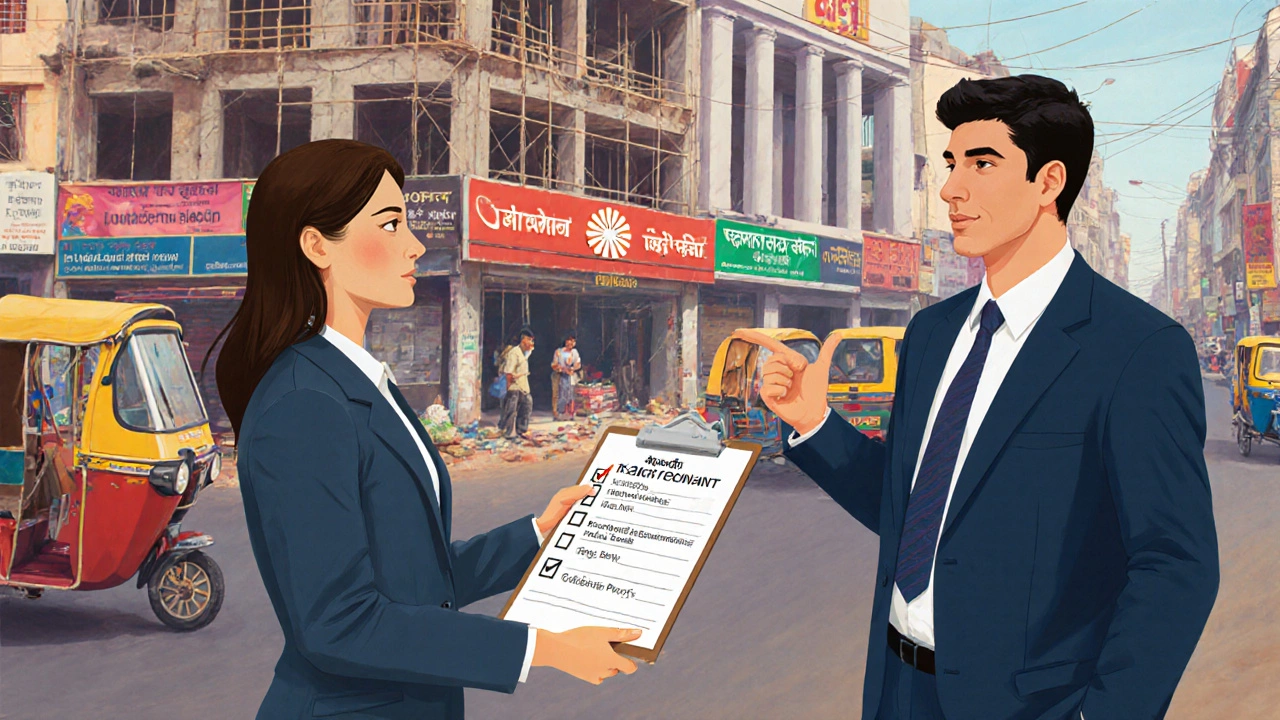Commercial Loan Down Payment Calculator
Enter the details below to calculate your required down payment for a commercial loan.
- Most lenders expect a 20‑30% down payment for standard commercial mortgages.
- SBA‑backed loans can start as low as 10% if you meet strict credit standards.
- Loan‑to‑Value (LTV) ratios, property type, and cash flow drive the exact percentage.
- Improving credit score or adding a strong guarantor can shave points off the required down.
- Use our step‑by‑step checklist to prep your loan package and avoid surprises.
When you’re eyeing a new storefront, warehouse, or office tower, one of the first numbers you’ll hear is the down payment. Knowing the exact percent you’ll need can make the difference between a smooth closing and a stalled deal.
Understanding the Basics
Commercial loan is a financing product used to purchase or refinance income‑producing real‑estate, typically ranging from retail spaces to industrial facilities. Lenders usually look at the down payment the upfront cash you contribute toward the purchase price as a measure of your commitment.
Another cornerstone metric is the Loan‑to‑Value (LTV) the ratio of the loan amount to the appraised value of the property. A 70% LTV, for example, translates to a 30% down payment.
Typical Down Payment Ranges
Below is a quick snapshot of what you’ll encounter across the most common loan types.
| Loan Type | Typical Down Payment | Typical LTV |
|---|---|---|
| Conventional Commercial Mortgage | 20‑30% | 70‑80% |
| SBA 7(a) Loan | 10‑15% | 85‑90% |
| SBA 504 Loan (real‑estate portion) | 10% | 90% |
| Bridge/Construction Loan | 25‑35% | 65‑75% |
| Owner‑Occupied (small‑scale) | 15‑20% | 80‑85% |
Key Factors That Influence the Required Percent
The numbers above are guidelines. Your actual down payment will be shaped by several variables.
- Credit Score: A credit score the numerical representation of your creditworthiness, typically ranging from 300 to 850 above 720 often unlocks lower down payment thresholds.
- Property Type: Multi‑family and mixed‑use assets are seen as lower risk and may qualify for slightly lower percentages than single‑tenant retail.
- Retail: 20‑30%
- Industrial: 15‑25%
- Multi‑Family (5+ units): 15‑20%
- Cash Flow / DSCR: Lenders calculate the Debt Service Coverage Ratio (DSCR) the ratio of net operating income to annual debt obligations. A DSCR above 1.25 can shave a few points off the required down.
- Loan Size: Smaller loans (under $500k) often demand higher percentages because the administrative cost is proportionally larger.
- SBA Involvement: An SBA loan a government‑backed loan program that reduces lender risk, allowing borrowers to put down less cash typically brings the down payment floor to 10%.
- Borrower Experience: Seasoned investors with a portfolio of successful properties can negotiate better terms.

How to Lower Your Down Payment
If the standard 20‑30% feels out of reach, consider these strategies:
- Boost your personal credit score to at least 740 before applying.
- Partner with an equity investor who can contribute cash in exchange for a share of ownership.
- Apply for an SBA 7(a) or 504 loan if you qualify for the program’s eligibility criteria.
- Offer a larger cash reserve or a personal guarantee to offset perceived risk.
- Choose a property with strong, verifiable cash flow that yields a DSCR above 1.30.
Remember, the commercial loan down payment is just one piece of the puzzle. Lenders weigh the whole financial picture.
Step‑by‑Step Application Checklist
- Gather personal and business tax returns for the past two years.
- Prepare a detailed rent roll and operating expense statement for the target property.
- Obtain a professional appraisal to confirm the property’s market value.
- Calculate the projected DSCR and ensure it meets the lender’s minimum.
- Assemble a list of comparable recent sales to support the purchase price.
- Secure a personal guarantee or additional collateral if requested.
- Submit the loan package and be ready to answer follow‑up questions quickly.
Real‑World Example Calculations
Example A - Retail Space
- Purchase price: $1,200,000
- Desired Lender LTV: 75% (typical for a conventional loan)
- Loan amount: $900,000
- Required down payment: $300,000 (25%)
Example B - SBA 504 Industrial Facility
- Purchase price: $2,000,000
- SBA 504 allows up to 90% LTV on the real‑estate portion
- Loan amount: $1,800,000
- Required down payment: $200,000 (10%)
Both scenarios illustrate how loan type, LTV, and property class directly affect the cash you need to bring to the table.
Frequently Asked Questions
What is the minimum down payment for a commercial mortgage?
For most conventional commercial mortgages the floor is 20%, but lenders may ask for up to 30% depending on risk factors.
Can I get a commercial loan with only 10% down?
Yes, if you qualify for an SBA 7(a) or 504 loan and meet strict credit, cash‑flow, and guarantee requirements.
How does the DSCR affect my down payment?
A higher DSCR (above 1.25) signals strong cash flow, which can convince lenders to approve a higher LTV, thus lowering your down payment.
Do lenders consider my personal credit score?
Absolutely. A score above 720 usually unlocks the best rates and the lowest down payment thresholds.
What documents should I prepare before applying?
Gather tax returns, rent rolls, operating statements, an appraisal, and a detailed business plan. Having these ready speeds up underwriting.

